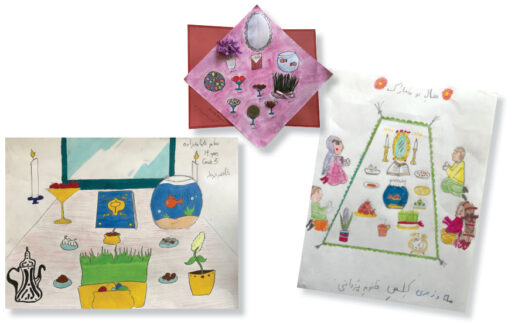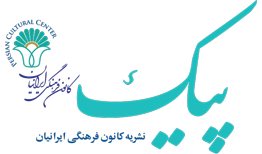Let’s Take Nowruz to Our Classrooms
Dear Parents:
Now that the pandemic has somewhat subsided and classroom activities have resumed, let’s organize a talk and perhaps a demonstration about Nowruz for our students’ classmates. The first thing we need to do is to approach the teachers and ask if we could give a presentation to the class about Persian New Year. Most teachers by now have some familiarity with Iranian culture and Nowruz. If not, this would be a great opportunity as an ethnic group to educate students and educators about the positive aspects of our culture. Several years ago, our friend Dr. Sheiveh Jones—who, at the time, was running the education column of Peyk—wrote about the importance of sharing the Iranian culture and the positive impact that it makes on students. The following is an excerpt from one of her articles, which first appeared in Peyk #126 (2010).
By the time children are in upper elementary and/or middle school, they could easily incorporate Nowruz into a cultural project they might be working on in English or social studies. In the lower elementary grades, however, there are still opportunities as a parent to “volunteer” the information.
I thought today I would share with you some tips on how to successfully engage elementary school children on the topic of Nowruz without losing your audience. Younger students have a hard time sitting still and listening to someone speak for long periods of time. The rule of thumb is one minute of talking for every year of age. So, for instance, when I go to a kindergarten class full of 5 and 6 year olds, I’m going to limit my talking to 5- to 6-minute chunks and will stick with a ten to fifteen minute presentation.
Below you will find a list of suggestions for engaging students:
1- Set up a mini haft-seen table so students are curious about what you are sharing.
2- Ask the group if and how they celebrated New Year’s this year. Allow a few students to share what they do for New Year’s. By doing this, you are creating a connection to and a context for Nowruz.
3- As you talk about the haft-seen table, use the Persian terms for the various items while holding them up and have students guess what they mean in English. For example, I might hold up garlic and say this is “seer” in Persian. Can you “seer”? When they say the word, then ask “what do you think seer means in English?”
4- Pass around the items so students can see and smell them.
5- When you finish the presentation, take questions. Be prepared, particularly with the younger students, to answer very random questions or hear random comments. You might have a student telling you her mom buys garlic from Sprouts!
6- If you are creative, you might talk to the teacher beforehand about having students create their own haft-seen. Most teachers would be very happy to help you with this—you can direct students while the teacher deals with the management of the classroom.
Whatever you do, consider you are paving the way for Iranian students and parents coming to the teacher’s classroom in the future. If the experience is pleasant, the teacher will most likely ask the next Iranian parent to do something for the class around Nowruz as well!
 Nowruz (New Day)
Nowruz (New Day)
The Arrival of Spring Equinox
The First Day of Spring is a Non-Religious Celebration of the New Year for More Than 300 Million Celebrants Around the World.
HAFT-SEEN
A major part of the Nowruz-New Year’s ritual is the setting of a special table with seven specific items known as the haft-seen (“haft” means 7 or “seen” in Persian). The items should be edible and grown with roots in the ground. In ancient times, each of the seven dishes and other items on the table were symbolic of the various attributes of life. These are Seeb (apple-beauty), Seer (garlic-health), Sabzeh (seed sprout-rebirth), Serkeh (vinegar-patience), Sumagh (sumac berries-joy), Senjed (fruit of jujube tree-happiness), and Samanoo (boiled malt with flour-prosperity).
In looking at twenty million Parsi words, we cannot find another item that could fit the requirements for the actual haft-seen but the above-mentioned seven. Today, some families add to these original seven “S” items additional items to round out their displays; these include Sekeh (coins-prosperity), colored eggs (fertility equal to the number of family members), a bowl with live goldfish (life and the sign change of Pisces), candles (enlightenment and happiness), and perhaps a holy book for those who celebrate as such. At the exact time to the minute and second when the season changes, all family members gather around the table to greet the New Year and the elderly give money or coins to the younger members of the family.
This year, Nowruz begins on Sunday, March 20, at 8:33:26 a.m., which is the exact time when winter turns into Spring, the Spring Equinox.

















